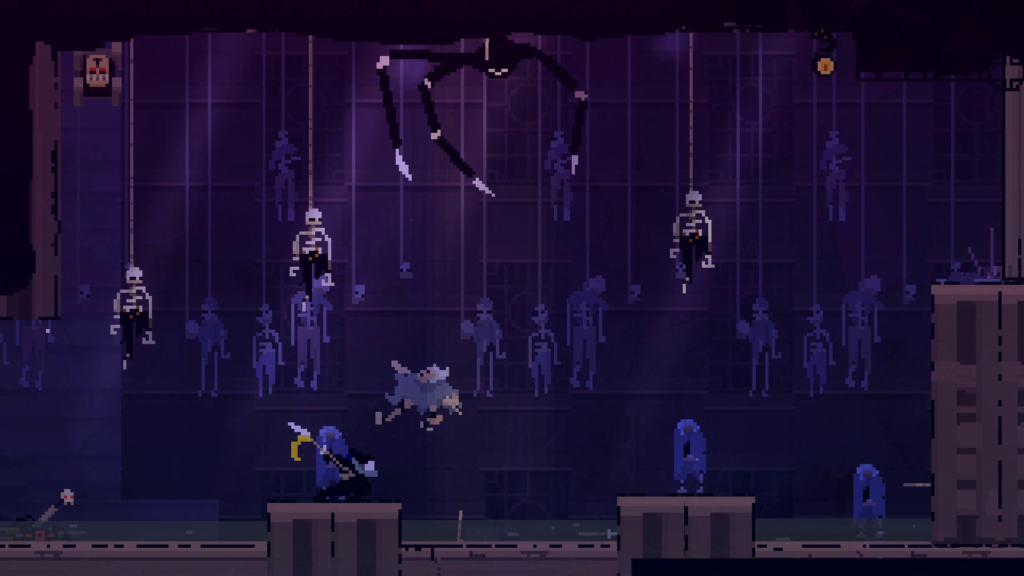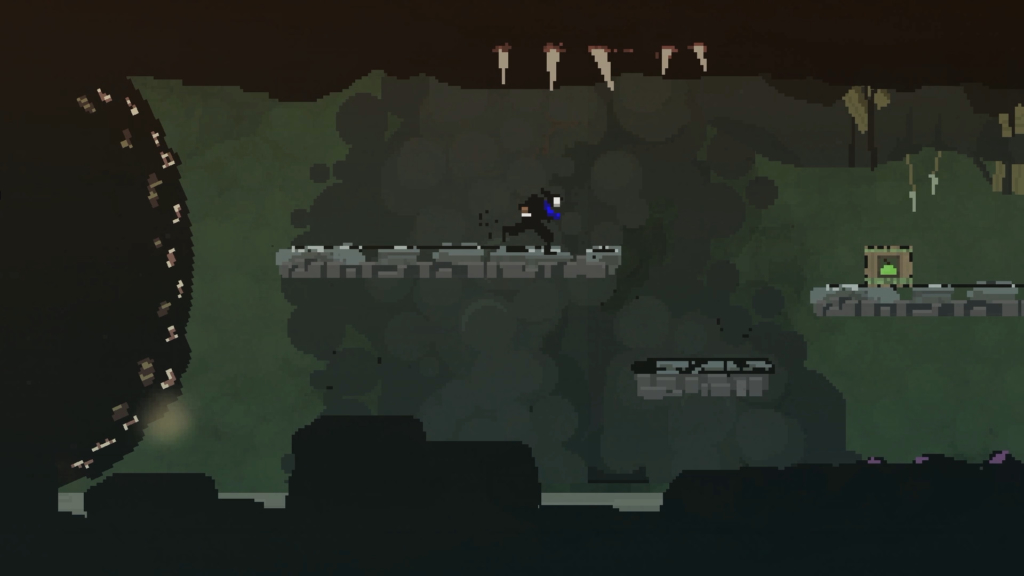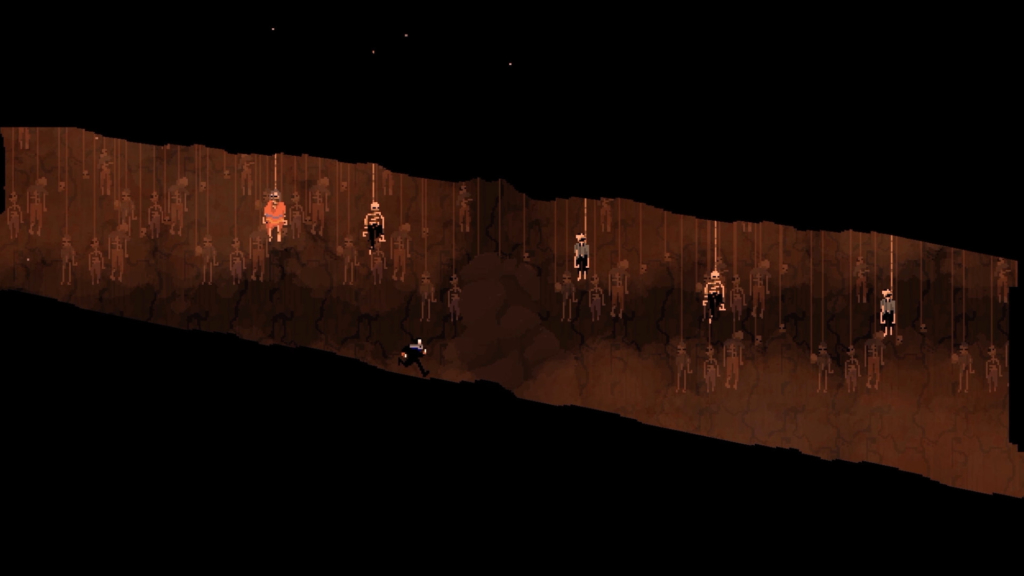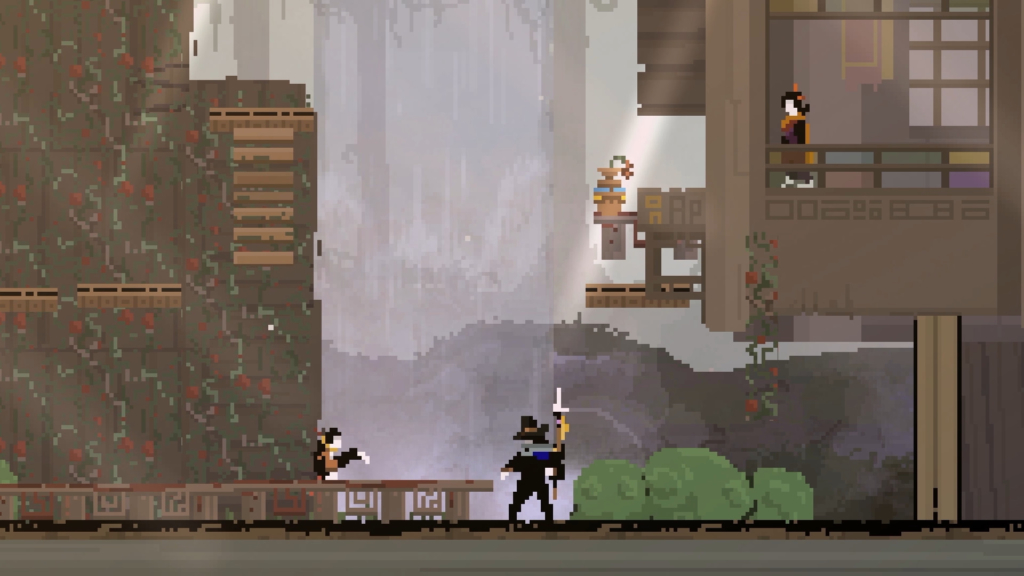Olija Demo Impressions
by July 27, 2020 @ 8:18 am

Played on PC
One of the most interesting games coming out of Devolver Digital’s Devolver Direct 2020 presentation a few weeks ago was Olija. Developed by Skeleton Crew Studio, the title is a 2D hack-and-slash action game set in a mysterious fantasy land. There’s a bit of nuance separating Olija from other similar action games, though, and there’s a lot to be excited about here in terms of both gameplay and lore.
Hack-and-Slash Combat That’s Not Mindless
Your main weapon in Olija is a magical harpoon. This is what you’ll use a lot of the time when engaging in combat. You’ll go up against a couple armed dudes at a time most of the time, but you’ll also be largely outnumbered by bigger gangs of bad guys. When you’re surrounded, your best bet is to cut down enemies as quickly as possible. The combat is interesting because while you can definitely hit the attack button pretty quickly, there’s a slower pace to the action that makes everything feel a bit more grounded rather than over-the-top.

Sometimes you’ll see enemies that are positioned on higher ground or far-off platforms. You can toss your harpoon at these enemies and then pull yourself toward them. This is useful for two reasons. First, doing so allows you to solve platforming-based puzzles and traverse hard-to-reach parts of the map. Second, if enemies are scattered, you can pull yourself toward faraway bad guys and pick them off before you get overwhelmed by other advancing enemies.
In addition to the harpoon, protagonist Faraday is also equipped with a sword. It’s a lot faster than the harpoon, allowing you to deal rapid hits to enemies, but it’s also noticeably weaker. Whether your style is more fast-paced or methodical, you’ll find yourself leaning toward the sword or the harpoon more often. While I enjoyed using the sword due to how fast it is, the harpoon was much more to my liking due to its higher damage and pulling ability.
Shipwrecked on a Mysterious, Hostile Land

Olija follows the exploits of the aforementioned Faraday, an explorer who’s shipwrecked on a strange land and wants nothing more than to find his way home. Part of what makes Olija so interesting is the world itself. While the demo didn’t go too deep into the story or characters, there were moments of respite where combat was kept to a minimum or nonexistent altogether. These bits are great at building atmosphere and creating a general interest in the world. There’s something truly dark and terribly unsettling about walking through a dark cave and seeing pixelated bodies hanging from the ceiling.
Speaking of which, the graphical direction of Olija may be pixel-based, but it’s not your typical 16-bit retro-like. The game’s drawn comparions to Another World, and I’d say that’s spot on, though I’d also say there’s a bit of a DreamBreak and Gods Will Be Watching vibe here. Everything animates smoothly, and the way Faraday and the rest of the characters move around and swing their weapons looks great.

So far, Olija is looking (and playing) really sweet. The game is fun, and the combat’s pacing is something mostly unexplored for this type of game. It’s less mindless and more methodical without being too demanding — like a cross between Sekiro: Shadows Die Twice and 2014’s Strider. The mysterious backdrop, which draws influence from both western pirate tales and ancient Japanese themes, is great and helps to build intrigue.
Olija is scheduled to release on Nintendo Switch and PC later this year, and it’s looking like it could be a big hit. Check out the demo on Steam while you still can if you haven’t already!
Follow this author on Twitter.